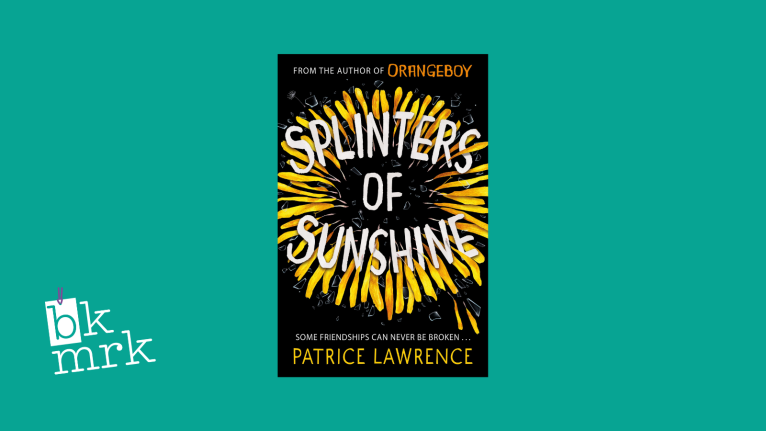Broad Signs Off In Style

After the frustrations of Old Trafford, the two sides headed south to The Oval for the final Test of a truly compelling series, with Australia having retained the Ashes but knowing that a win or a draw would give them their first series victory in England since 2001. Despite Jimmy Anderson’s very modest return this series, he was retained in an unchanged side. Australia decided to bring in Todd Murphy to give them a spin option, meaning that Cameron Green lost out to Mitchell Marsh for the all-rounder’s spot, as the latter has certainly performed very well with the bat.
Pat Cummins won the toss and Australia decided to field first under overcast conditions. Ben Duckett and Zak Crawley got off to their usual positive start, so when Cummins came on first change Duckett had a heave at his first ball which flew to slip and was dropped by David Warner. The fifty partnership was reached in 60 balls and then Crawley was dropped in the slips when a diving Steve Smith couldn’t cling on. Finally Duckett, on 41 at a run a ball, feathered one down the leg side off Marsh, which was given out by DRS. Moeen Ali hadn’t even faced his first delivery when Crawley got a good one from Cummins that he could only edge to Smith. Next Josh Hazlewood struck as Joe Root chopped on to his stumps, and England had stumbled from 62 for none to 73 for three. It could have been even worse, but Alex Carey dropped Harry Brook on 5. Three wickets for Australia, but three missed chances too. The fifty partnership took just 57 balls, with Moeen contributing just 7, and came up with Brook hitting four, four, six off Mitch Starc just before the break, by when the score was 131 for three.
Early in the afternoon, Brook went to fifty off 44 balls, but then Moeen pulled up with a groin problem. At the time he was on 11 off 38 balls, and he decided to go into one-day mode because of his injury, launching the next ball he faced for six. With only the easiest of singles now possible, the hundred partnership was completed in 102 balls. Murphy came on and Moeen hit across the line and was bowled for 34. Starc then beat Ben Stokes all ends up, sending his off stump flying. Next Jonny Bairstow played on off Hazlewood, before Brook edged Starc to Smith on 85. England had gone from 184 for three to 212 for seven in nine overs, with all their top-order batters out. It felt like a match-turning period. Chris Woakes and Mark Wood have both had good series and they responded, so by tea it was 250 for seven.
The evening session began with an LBW decision overturned by DRS and a dropped catch by Marsh before Murphy bowled Wood for 28. Stuart Broad skied one to Travis Head at cover off Starc. Murphy then dropped Woakes as England benefited from a fifth missed catch of the day, before Woakes holed out on 36 and England were all out for 283, Starc finishing with figures of four for 82. England took to the field without Moeen, and almost immediately Broad could have had Warner caught down the leg side, but Bairstow couldn’t do more than get a fingertip to it. Warner didn’t make it count, as Crawley took a brilliant catch off Woakes to send him back. By the close, Australia had edged their way up to 61 for one from 25 overs (by contrast England were 131 for three off 26 overs in their first session), but it was their more circumspect approach that gave them a narrow edge after Day One.
At the start of the second day, Woakes insisted that patience would be the key, but it was Australia who took that attribute to its extreme, and it was almost 15 minutes before the first runs of the day were scored – four byes – and after more than 40 minutes only 14 runs had been added. Marnus Labuschagne was especially guilty of inactivity before he was stunningly caught at first slip by Root off Wood, having made just 9 in 82 balls (his dismissal came the delivery after Broad had swapped over the bails, perhaps getting into the Australian’s bubble). At lunch, it was 115 for two, with just 54 runs scored in an attritional session.
In the first over after lunch, Usman Khawaja was LBW to Broad, for whom it was his 150th wicket in Ashes cricket. In his next over, Broad removed Head, who got a fine edge to Bairstow. Marsh came in much more positively before chopping on from Anderson (his 50th wicket at The Oval) to make it 151 for five. Carey then fell to Root, caught by Stokes at extra cover off a slower one. For Stokes 100th it was his Test catch, making him the 11th England player to reach that landmark. It also meant he became just the seventh player in Test history to have scored 1000 runs, taken 100 wickets and caught 100 catches – Anderson and Ian Botham being the two other Englishmen to do it. Just before the break, Wood induced a mistimed pull from Starc, which was easily caught by Duckett, and at tea it was 186 for seven, with England now on top.
As soon as the new ball was due, England took it, but Smith still went to his fifty off 98 balls. There were some moments where he and Cummins were lucky to survive, but they went on to complete their fifty partnership off 94 balls. Finally, England got the breakthrough they needed when a slower ball from Woakes was top-edged by Smith and Bairstow ran back to take a great catch to remove him for 71. England’s hopes for a quick finish to the innings were dashed by Murphy, who faced up to a short-pitched barrage from Wood – and kept on depositing him into the stands. Cummins and Murphy took Australia into the lead before Woakes had Murphy LBW for 34. Right at the end of the day, Root came on and Cummins tried to hit him out of the ground, only for Stokes to make a superb catch on the boundary to bring the innings to a close on 295, giving Australia a first-innings lead of 12. After two days the game was back in the balance.
Any doubts about how England would go about their second innings were removed after the first, fifth and sixth balls went to the boundary as England scored 13 in the first over to take the lead. The fifty partnership took just 53 balls to arrive as Crawley and Duckett pummelled the boundary ropes. Eventually, Duckett got a faint edge off Starc and was out for 42, bringing Stokes to the wicket in his new position at No 3. Crawley reached his fifty off 61 balls, further reinforcing his excellent Ashes series. The fifty partnership raced up in just 41 deliveries and at lunch it was 130 for one – a truly dominant England effort, leaving Australia looking shell-shocked.
In the afternoon, Stokes was nearly caught on the boundary, but Starc couldn’t quite take it in and it gave the England skipper his 15th six of the series, setting a new Ashes record by hitting one more than Kevin Pietersen in 2005. But there was no mistake from Smith when Crawley edged Cummins to second slip. Root joined Stokes and was immediately into his rhythm, soon bringing out his reverse ramp, though he got the advantage of a marginal LBW call. They brought up their fifty partnership in 63 balls. Root overtook Stokes and went to fifty in 42 balls, but almost immediately after Stokes mistimed an attempted straight six and holed out to Cummins off Murphy for 42. Brook hit his second ball back over Murphy’s head for a big six before edging a great delivery from Hazlewood to Carey. Bairstow came out bristling with intent, so Root simply gave him the strike and at tea it was 265 for four, with England having scored at 5.63 per over throughout the session.
The day’s final period saw Australia rein England in a little. The fifty partnership for the two Yorkshire stars came up in 66 balls, with Bairstow going to fifty off 60 deliveries. The pair went to their 12th century partnership off 141 balls, by which time the lead was already over 300. On 91, for the first time in his career, Root was bowled by an off-spinner (Murphy) to a ball that kept a bit low. Moeen received a huge ovation as he left the pavilion, fans recognising it was probably his final Test innings, and on 14 he was dropped on the boundary. Bairstow fell for 78, edging Starc to Carey, at which point England were 348 in front. Woakes bunted one to mid-off to give Starc his third wicket. Moeen ramped one from Starc over the keeper but it was caught on the boundary on the line of first slip, taking him to 23 wickets in the series. Wood tried to launch Murphy into the stands, and was caught by Marsh, which meant that Anderson joined Broad and unleashed his reverse sweep and an orthodox one to take the score to 389 for nine at the close, a day in which Australia managed to bowl just 80 overs, depriving fans of more than ten per cent of their expected play. England’s batting meant they got great value in the cricket they did see.
After the end of the day, there was an announcement from Broad that he would be retiring from all forms of cricket at the end of the Test, saying that he wanted to go out at the top – and an Ashes Test at The Oval was just that for him, especially after such an enjoyable series. He played 167 Tests, a total exceeded only by Sachin Tendulkar, Anderson, Ricky Ponting and Steve Waugh (both of whom managed 168 Tests). The longevity of Anderson and Broad has been remarkable – Courtney Walsh, with 132 Tests, is the next highest among pace bowlers. His ability to seize the moment was perhaps unlike any other bowler England have had, and he had also learned how to fire up the crowd, feeding off that atmosphere to drive himself to new heights. His consistency was remarkable too: he played 25 consecutive home Ashes Tests from the start of the 2009 series, and taken 20 or more wickets in each of those five series. He will be hugely missed.
England came out to bat again at the start of the fourth day, with Broad given a guard of honour by the Australians; he tried to walk out alongside Anderson, who was celebrating his 41st birthday, but Anderson gave him his moment. In the first over, Broad hit his 55th Test six, drawing him level with Imran Khan, Rishabh Pant and Ross Taylor. Only Stokes, Andrew Flintoff, Pietersen and Botham have more for England. He became only the second player (after Wayne Daniel) to hit his last ball in Test cricket for six. It was the last scoring shot of the innings, as Anderson was LBW to Murphy and England were all out for 395, leaving Australia to chase 384 to win the series, which would make it the eighth highest successful run chase in Test history and easily more than the Oval record of 263.
If Broad had been writing the script, he would have dismissed Warner in his first over, but there were no wickets in his first spell, and Warner and Khawaja went on to complete a fifty opening partnership off 80 balls (the previous opening partnerships in the match were 62, 49 and 79), and by lunch they had progressed to 75 without loss and there was just a little bit of rain in the air.
After the break, there was a spell of attritional cricket before Wood finally came on after 32 overs, with the score on 99. The hundred partnership came up off his first delivery after 194 balls, and off his second Khawaja went to his fifty off 110 balls. Off his tenth delivery, Warner reached his fifty in 90 balls. Khawaja then went past the landmark of 5000 Test runs, just before the players had to come off for rain with the score on 135 without loss. And, after that, it wasn’t possible to get back on, setting up a final day where England still needed ten wickets while Australia wanted 249 more runs. With the weather a potential factor in proceedings, the outcome of this most thrilling of series was going to be decided on the final day.
It was no surprise that Broad was given the first over of the final day, but he was unable to make any early inroads, though batting looked much trickier than it had been the day before. Instead, Warner soon feathered one from Waokes through to Bairstow and he was gone for 60 – England had the opening they needed. Woakes followed it up quickly by trapping Khawaja LBW for 72, bringing an end to the series’s top runscorer (he made 496, ahead of Crawley’s 480). Next, Wood found the edge of Labuschagne’s bat and Crawley took a good low catch – 169 for three, and England were looking confident.
But Smith and Head steadied things for Australia, taking them past 200 and it took just 61 balls to bring up the fifty partnership. Not only were the seamers getting plenty of movement, Moeen was finding turn, too. He got one to lift and Smith could only edge it through high above Stokes at leg slip, but as he brought his hand down at the end of his jump, it knocked his knee and the ball fell to the ground. The decision was correctly given as not out, as it was never fully under control, and so the sides went in to lunch wondering if this could be decisive moment in the outcome of the whole series with the score on 238 for three, as Australia needed just 146 more runs.
Then the rain returned, and for a while there was a danger the match might peter out due to the weather, which would have been no way for the series to end. At 4.20 the action resumed, with 47 overs scheduled to play, and once again Woakes looked the most likely wicket-taker. Smith was looking ominous in recording another fifty, this time off 89 balls, but Moeen found Head’s edge, and Root ensured he was out on 43. Then it was the big one: Woakes accounted for Smith on 54 with Crawley taking the catch. Next over, Moeen had Marsh caught behind – a superb diving grab from Bairstow, whose work behind the stumps had improved so much as the series progressed. A few balls later, Woakes struck again as Starc fell second ball, caught by Crawley yet again. Australia had gone from 264 for three to 275 for seven in three overs, and suddenly, after Australia had seemed on top, England were on the verge of victory.
But it’s never been that simple in this series. With the target under 100, the new ball fell due, but England decided to continue with the old one. Cummins tried to launch Moeen to the square leg boundary, only for a bottom edge to loop up off his thigh to Stokes, who moved quickly to his left to pouch the ball. Carey and Murphy still weren’t done, even though Broad came back in what many felt was perhaps a slightly sentimental decision by Stokes. Runs were flowing, the target was down to 55, and so Broad changed the bails at the non-striker’s end. He walked back to his mark with a smile on his face – surely the trick couldn’t work a second time in the match?
With the crowd roaring him on, he steamed in; Murphy edged it to Bairstow. The story was written for Broad to take the match-winning wicket, and so it almost came to pass: Carey edged it but Crawley just couldn’t hang on. But some stories have an inevitable conclusion: Broad found Carey’s edge again, Bairstow’s gloves did the rest. Broad ran to his old partner Anderson, and they celebrated the 1039th wicket they had shared when they’d been in the same team as if it was their first. Australia were all out for 334 and England were the winners by 49 runs. The series was squared, but the Ashes remained with Australia. It was only the fourth time in Test history that a side had come back from 2-0 down in a series to draw it 2-2.
It had been a truly special series, with none of the four Tests won by a greater margin than 50 runs or three wickets. Woakes finished with four for 50 and was named both Man of the Match and Man of the Series, for his 19 wickets at an average of 18.15. Moeen let it be known that he was once more stepping back from Test cricket for a final time, and Stokes said that he hoped his side had inspired young cricketers in the way the 2005 Ashes had done when he was little. You can quibble with some of the things England had done over the whole series, that might have cost them the Ashes, but they had also got so many things right. Crawley and Duckett have established themselves as a formidable opening pair, while the development of Brook bodes well for the future. The return of Bairstow and Moeen had come increasingly good as the series wore on, while Woakes showed he was as good as anyone in English bowling conditions. The next time the Ashes are held in England, both sides will look very different to the teams we’ve seen in 2023, but if they can replicate even some of the excitement of this series, we’re in for a treat.





